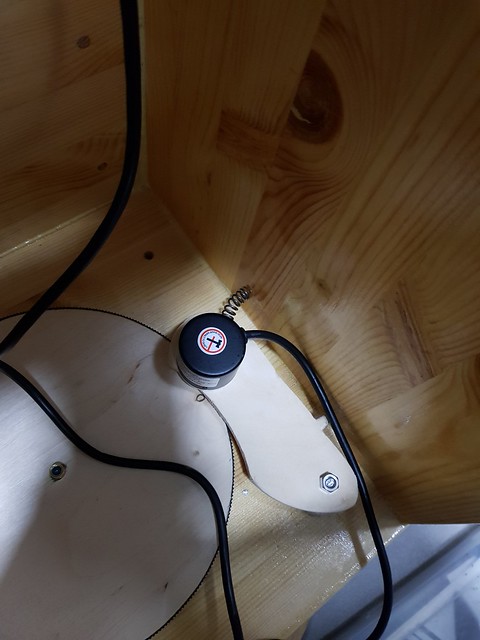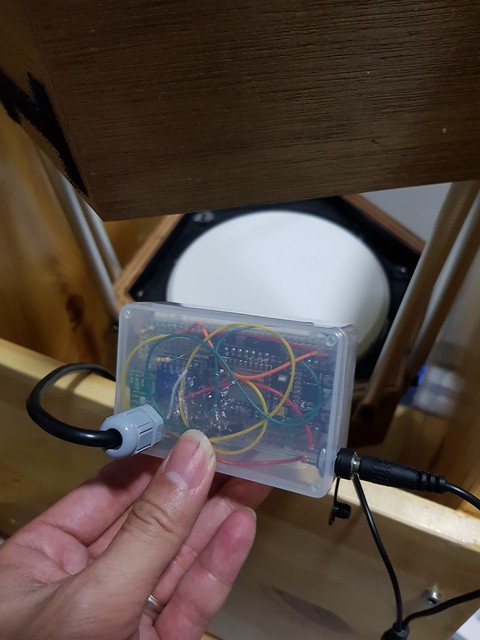Firstly, a large gear is fabricated using a timing belt (315 teeth) attached to a wooden disc that was carefully cut for the belt to fit over.
 Encoder Disc by Cyrus Beh, on Flickr
Encoder Disc by Cyrus Beh, on FlickrThis mates with the encoder, which has a 16 teeth gear. The reduction ratio is thus 19.6875. This gives more than 40000 steps per circle.
A swing arm pivots and pushes the encoder onto the gear.
 Swing arm by Cyrus Beh, on Flickr
Swing arm by Cyrus Beh, on FlickrThe spring pushes the swing arm. Pressure is firm, but not too much so. Otherwise, the movement of the scope will become bumpy, since you will feel the gears meshing.
A box destined for the trash heap was upcycled to serve as the holder for the breadboard, which in turn holds the electronics. A barrel connector delivers 12V power from the same battery that powers the cooling fan. This is down-converted to 5V using a Pololu step-up/step-down converter. Wiring is done with jumpers on the breadboard.
 Box by Cyrus Beh, on Flickr
Box by Cyrus Beh, on FlickrA cabe gland (gray in picture above) was used to allow the encoder cable to be introduced into the box, without any chance of it tugging on the electronics. This prevents accidental disconnection.
Lastly, strips of velcro attach the box onto the scope body.
 Velcro-on Accelerometer by Cyrus Beh, on Flickr
Velcro-on Accelerometer by Cyrus Beh, on FlickrHere it is in action: